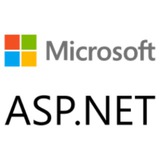In today’s article, we will see how to perform simple CRUD operations in ASP.NET Core Web API using ADO.NET. https://www.c-sharpcorner.com/article/crud-operations-in-asp-net-core-web-api-using-ado-net/
C-Sharpcorner
CRUD Operations In ASP.NET Core Web API Using ADO.NET
In today’s article, we will see how to perform simple CRUD operations in ASP.NET Core Web API using ADO.NET.
Why isn't my ASP.NET Core environment-specific configuration loading?
In this post a describe an issue I was having in which my application wouldn't load my appsettings.Development.json file when running in Docker on Linux
https://andrewlock.net/why-isnt-my-asp-net-core-environment-specific-configuration-loading/
In this post a describe an issue I was having in which my application wouldn't load my appsettings.Development.json file when running in Docker on Linux
https://andrewlock.net/why-isnt-my-asp-net-core-environment-specific-configuration-loading/
Andrew Lock | .NET Escapades
Why isn't my ASP.NET Core environment-specific configuration loading?
In this post I describe an issue I was having in which my application wouldn't load my appsettings.Development.json file when running in Docker on Linux
Disable Automatic Model State Validation in ASP.NET Core 2.1
Virendra Dugar disables automatic model state validation in ASP.NET Core 2.1 to return the custom error instead of the 400 bad request error.
http://www.talkingdotnet.com/disable-automatic-model-state-validation-in-asp-net-core-2-1/
Virendra Dugar disables automatic model state validation in ASP.NET Core 2.1 to return the custom error instead of the 400 bad request error.
http://www.talkingdotnet.com/disable-automatic-model-state-validation-in-asp-net-core-2-1/
Talking Dotnet
Disable Automatic Model State Validation in ASP.NET Core 2.1 #aspnetcore
Find out how to disable automatic model state validation in ASP.NET Core 2.1, which is enabled by default via APIController attribute.
Analyzing a memory leak discovered by our build server
A few weeks ago, I was working on a feature in Rider when I received a build failure e-mail from TeamCity, our continuous integration service. I was not allowed to merge my feature into the main product as it was causing a … Continue reading →
The post Analyzing a memory leak discovered by our build server appeared first on .NET Tools Blog.
https://blog.jetbrains.com/dotnet/2018/10/02/analyzing-memory-leak-discovered-build-server/
A few weeks ago, I was working on a feature in Rider when I received a build failure e-mail from TeamCity, our continuous integration service. I was not allowed to merge my feature into the main product as it was causing a … Continue reading →
The post Analyzing a memory leak discovered by our build server appeared first on .NET Tools Blog.
https://blog.jetbrains.com/dotnet/2018/10/02/analyzing-memory-leak-discovered-build-server/
JetBrains Blog
Analyzing a memory leak discovered by our build server – .NET Tools Blog | JetBrains
A few weeks ago, I was working on a feature in Rider when I received a build failure e-mail from TeamCity, our continuous integration service. I was not allowed to merge my feature into the main produ
Presentation: Journey to Cloud Architecture
Dylan Smith discusses the architectural challenges faced turning TFS into Azure DevOps, the evolution of the architecture, and lessons learned along the way.
By Dylan Smith
https://www.infoq.com/presentations/microsoft-tfs-azure-devops?utm_campaign=infoq_content&utm_source=infoq&utm_medium=feed&utm_term=.NET
Dylan Smith discusses the architectural challenges faced turning TFS into Azure DevOps, the evolution of the architecture, and lessons learned along the way.
By Dylan Smith
https://www.infoq.com/presentations/microsoft-tfs-azure-devops?utm_campaign=infoq_content&utm_source=infoq&utm_medium=feed&utm_term=.NET
InfoQ
Journey to Cloud Architecture
Dylan Smith discusses the architectural challenges faced turning TFS into Azure DevOps, the evolution of the architecture, and lessons learned along the way.
So far we have talked about how quite a few new features of C# 8. We have talked about how C# 8 fixing interpolated verbatim strings (here), we have talked about the languages new Index Struct and the usage of the Hat operator (here) and we have talked about default interface methods (here). In this article we will talk about another feature that some people might call small and minor, but still very very useful as it can clean up code and remove lots of noise.
http://www.devsanon.com/c/c-8-introducing-target-typed-new-expressions/?utm_source=csharpdigest&fbclid=IwAR24othAi3POVDJRWPsOQQzFtUObuBJSlySopT34ra8VxrQm04n-aUmR2a0
http://www.devsanon.com/c/c-8-introducing-target-typed-new-expressions/?utm_source=csharpdigest&fbclid=IwAR24othAi3POVDJRWPsOQQzFtUObuBJSlySopT34ra8VxrQm04n-aUmR2a0
.NET platform architecture (book in English, Russian and Chinese) https://github.com/sidristij/dotnetbook
GitHub
GitHub - sidristij/dotnetbook: .NET Platform Architecture book (English, Chinese, Russian)
.NET Platform Architecture book (English, Chinese, Russian) - sidristij/dotnetbook
